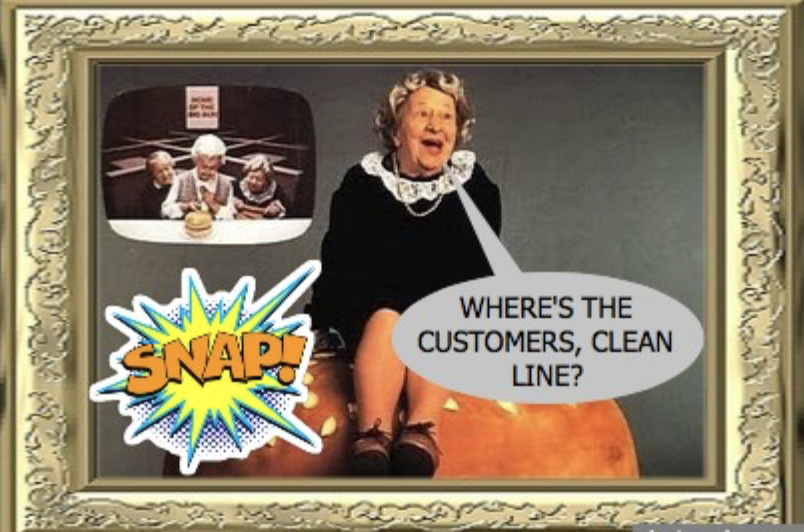Hi Gullible One-Sided Story Journalist, Attached is some bullshit that you can use for your story. We have also provided someone else to blame for Michael Skelly's failure. If you need anything else to craft your biased, fantasy story, please let me know!
The Tennessee Valley Authority is getting blamed for "killing" the Plains & Eastern Clean Line.
The Plains & Eastern Clean Line is dead? Sweet!
Bravo, TVA! Well done!
Except it really wasn't TVA's fault. It's Michael Skelly's fault. Clean Line had no customers. No customers, no revenue, no financing, no construction, no transmission line. It's just that simple. Skelly might as well blame Duke Energy, Southern Co., Entergy, Florida Power & Light, or any other utility, for not buying his transmission capacity. Skelly was proposing a merchant project where all risk is shouldered by investors, not consumers. Skelly was granted negotiated rate authority by the Federal Energy Regulatory Commission to negotiate rates for his transmission service with willing customers. Nothing in Skelly's transmission plan obligated the TVA, or any other utility, to become customers. If Frito-Lay goes out of business next week, will it be YOUR fault for keeping your New Year's resolution to lay off the over-processed, salty, junk food? Of course not! You choose what to buy and who to buy it from. The same is true of merchant transmission projects like Clean Line. The whining of the "environmentalists" makes me laugh! Once again, the environmentalists completely fail at trying to plan and run the TVA from their home offices. These "environmentalists" have no idea what it takes to run the TVA so they need to shut their pie holes and let the professionals do their jobs.
So, how dead is Plains & Eastern?
The nation's biggest wind generator, NextEra Energy Resources, has bought the Oklahoma portion of the proposed 700-mile-long Plains and Eastern Line to serve Oklahoma and Midwest customers. But for now, plans to bring wind energy from the windy areas of Oklahoma and Texas into the less-windy Tennessee Valley and Southeastern part of the United States are stalled and unlikely to be resurrected for years.
"Unfortunately, this represents a significant delay in our ability to deliver this energy in the Southeast," Skelly said of the decision not to actively pursue the project at this time. "TVA's lack of interest has certainly not been helpful."
Skelly said other utilities want to buy wind-generated power, and Clean Line is now focusing on its four other transmission projects in the Midwest and the Western part of the United States. NextEra will use the Oklahoma part of the Plains and Eastern line to begin serving parts of Oklahoma, Kansas with wind-generated power that NextEra plans to develop.
"We are hanging onto our permits and rights of way in Arkansas in the event TVA in the future says it might like this power somewhere down the line, " Skelly said. "But at this point it would take considerably more effort to get this project moving for TVA again."
"TVA obviously has to make its own decisions about its future power supply, and we understand that," Skelly said. "But for now, we've stopped the process [of pursuing an interconnection agreement with TVA] because TVA required a whole lot of money to continue in this process but they have not wanted to make any commitments to buy the energy off of this line."
So, if TVA's "whole lot of money" was too rich for Clean Line's bank account, where is Skelly going to get the money to "hang onto our permits and rights of way in Arkansas"? That costs money, too, and for an undetermined "maybe" period of time? I don't think so.
Skelly tries really hard to pretend that the part of his project that he didn't sell to another company is still commercially viable.
But Skelly said other utilities have found that their projections about the costs of using a variable source of power like wind have often proven more than expected "and as battery and other storage methods become better, wind will prove even more attractive."
"We think we gave TVA a very good offer, but apparently they did not," he said. "We're still getting a lot of interest from other utilities that want to increase their renewable energy and see wind as a good way to achieve that at a reasonable cost."
Skelly said Duke Power and other Southeastern utilities have expressed interest in buying more wind-generated power, but TVA was needed to buy and/or readily transmit the 3,500 megawatts the line was designed to deliver to Memphis.
Instead, Plains & Eastern is dead. It's dead because it failed to attract any paying customers. It failed to attract any paying customers because it was a bad idea that failed.
Skelly said he and his partners have been working on the Clean Line transmission project for more than eight years and have had to battle local landowners who didn't want to sell their land and regulators in Arkansas who balked at permitting the transmission line rights of way to a developer from another state.
"We've been able to overcome those obstacles, but we always knew when we started it wouldn't necessarily be easy or quick," he said. "But we do think it is the right choice in the long run."
I think Michael Skelly should stop trying to blame everyone else for his own failure.
But there's this: The Plains & Eastern Clean Line is dead, according to the Chattanooga Times Free Press!





 RSS Feed
RSS Feed